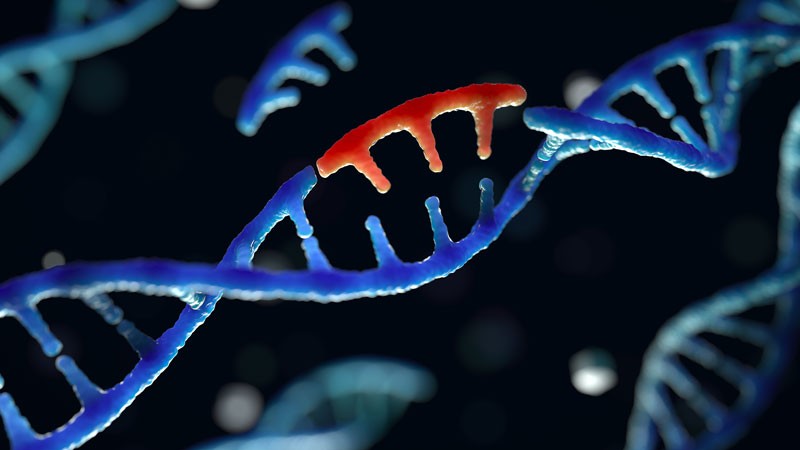An overview on Genetic mutation

Genetic mutations are part and parcel of evolution. Owing to the aforesaid mutations we witnessed spectacular transformations. Among numerous examples, the apes straightening their spines and evolving into present-day humans is a classic example. For the uninitiated, a genetic mutation refers to the change in the DNA sequence.
Usually, a wide array of factors triggers mutations. Some of the common examples of the aforesaid include, DNA copying mistakes that happen while cell divisions, the influence of viruses, or being exposed to radiation. The consequences of a genetic mutation are permanent. Meanwhile, you can read more on the NR2F1 mutation and how it can affect us. Before taking a deeper probe on genetic mutations, we must become familiar with the DNA and genes.
The DNA- A brief overview
The presence of microscopic cells is inevitable in all living things. DNA or deoxyribonucleic acid happens to be the core of the aforesaid cells. If we further classify the DNA structure, it consists of two intertwined chains that mimic a double helix. Each of these chains consists of a sequence of nucleotides. Now, each of the nucleotides is made up of deoxyribose (a sugar variant), a nitrogen base, and phosphate groups. You may search for DNA images, and notice the sequence. Precisely, it is the sequence of the nucleotides. Furthermore, DNA is made up of four chemical bases, Adenine, Guanine, Cytosine, and Thymine.
Understanding genes and protein synthesis
Genes happen to be an integral part of the DNA sequence which sends instructions to the cells to synthesize proteins. In most living things apart from bacteria, genes consist of two variants of DNA sequences, the introns and exons. Most of us are familiar with the term amino acids. The exons are responsible for the release of the same. Genes, as we all know, are hereditary that remains in each cell nucleus. Basically, the role of the genes is to provide instructions to produce proteins.
Mutation in details
By mutation, we refer to the condition when the nucleotide sequence of DNA exhibits random changes. As mentioned earlier, DNA replicates during cell division and the aforesaid changes in the sequences can happen instinctively. Additionally, environment-induced aspects can also trigger changes in the DNA sequence,
For your information, the rate of mutation is significantly low, and the biological systems are ready to go the extra mile for keeping the mutations as low as possible. The sole reason being, mutations can have detrimental effects. You must understand, despite the rate of mutation being low, it does not halt. In specific situations, the cells have no option but to let the mutation happen. Mutations, in fact, are the essence of the evolution of living beings.
The various types of mutations
Changes in DNA can happen in several ways. We can broadly classify the types into four categories, and these are, insertion, substitution, deletion, and frameshift. Here are the details:
- Substitution: Substitution refers to the replacement of the nucleotide with another. It can be further classified into a missense variant and nonsense variant.
- Insertion: In this aspect, the DNA sequence changes when one or more nucleotides adds to the gene. The resultant of the above can make the protein (amino acids) malfunction.
- Deletion: As the name suggests, it deletes one or more nucleotides. Deletions can further be small and large. The latter has the ability to remove a gene along with the neighboring genes.
- Frameshift: Frameshift refers to when an addition or deletion of nucleotide shifts the DNA grouping and alters the code for the amino acids. Understandably, the produced protein does not function accurately.
The effects of mutation
As you can understand, a mutation can have a drastic effect on any living being. When we refer to the evolutionary changes, it is the consequence of many mutations. Not all mutations are harmful, they can also be beneficial or neutral, and it primarily depends on the location where it takes place. Generally, we believe, genetic mutations are the root of diseases. However, this isn’t true. So, for example, a neutral mutation will have no effect.
On the other hand, there are several citations of beneficial mutations too. The most common being, individuals who are affected with sickle cell disease can become resistant to malaria if they have the mutant gene. Harmful mutations happen when the mutation results in a nonfunctional or faulty protein that in turn leads to the foundation of developing a genetic disease.
Cancer is, by and large, is one of the classic examples of a harmful mutation. Mutations in genes regulating the cell cycle have the potential of damaging the DNA, and it triggers random cell divisions.
Assessing the mutation rates
A wide array of methods is functional right now to assess the rates of the various mutations, in all the living things. The biggest hurdle however is the DNA changes do not occur randomly. Furthermore, the detection of the aforesaid is possible only on a background of a similar DNA.
Wrapping it up
It is possible to take specific measures that can help prevent genetic mutations. Of course, there are certain conditions that we cannot control. For instance, those who inherit gene abnormalities can do nothing to prevent mutations. Still, we can do our best by limiting exposure to the mutation-causing environmental factors. Nevertheless, mutations will and remain as one of the primary forces of evolution, and the science arena will continue to explore this fascinating subject.






